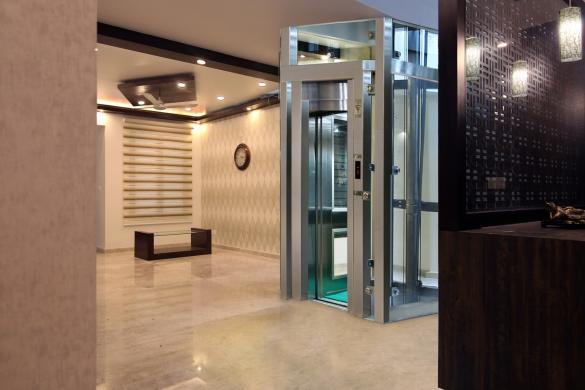Exploring The Floors Of History Of Lifts

Elevators or Lifts as we know has been around for longer than you can imagine. The earliest lifts were called ‘Hoists’. Reports suggest Archimedes used a form of hand-propelled lift as early as 218BC. Sources suggest information of some lifts being powered by animals and sometimes even water. 24 lifts were operated by a force of over 200 slaves at the ancient Roman Colosseum.
In the early 19th century, as the Industrial Revolution began, we humans needed lifts more than ever and encouraged a rapid advancement in the industry of lifts and technology that surrounds it to support heavy weight loads in factories, warehouses, and mines. Lifts evolved from crude or steam drove to hydraulic power.
1823
Two architects named Burton and Hormer invented the first modern lift in the year 1823 and called it an ‘Ascending Room’ - a paid service for taking tourists to a reasonable height, allowing them to gaze at the magnificent panoramic view of London.
1852
In 1851, when an industrialist named Elisha Otis was cleaning up his factory, he wondered how he can get all the debris to the upper levels. He had heard of ‘Hoisting Platforms’ but wasn’t willing to take the risk of installing one as they were often unreliable and unsafe. He and his sons, who were also tinkerers, created and tested their own ‘Safety Elevators’. No orders came in over the next several months but eventually, he got the first chance at publicity at the New York Crystal Palace. He amazed a massive crowd of people showcasing his safety feature that held the lift safely even when the rope was cut with an axe. This soon caught the attention of people all over the world leading to a rapid rise in the production of lifts.
1880
In the late 19th century, a German inventor named Ernst Werner Siemens invented the first electrical elevator. The safety and speed of electric elevators were significantly enhanced by Frank Sprague. Sprague also added floor control, acceleration control of cars, and safeties.
1900
By the early 1900s, completely automated elevators were available, but passengers were reluctant to use them. And over the next 50 years multiple features such as ‘Emergency Stop’, ‘Emergency Telephone’ and Voice aided assists were adopted to ensure a much safer and comfortable mode of transportation between floors.
Some Facts
- Modern lifts are almost failsafe with only 1 in 5000 chance or 0.02% chance of being trapped making it statistically the safest way to travel.
- Elevators are supported by multiple cables and each one of those cables is capable of transporting people across floors safely and comfortably.
- The elevator at Luxor Hotel in Las Vegas travels at a 39-degree angle.
- Shanghai Tower in China is equipped with the world’s fastest elevator, which can reach speeds of up to 48 mph.
If you’re looking to install an elevator to your building, look no further! Get in touch with Cooper Elevators to choose the perfect elevator that suits all your needs.
